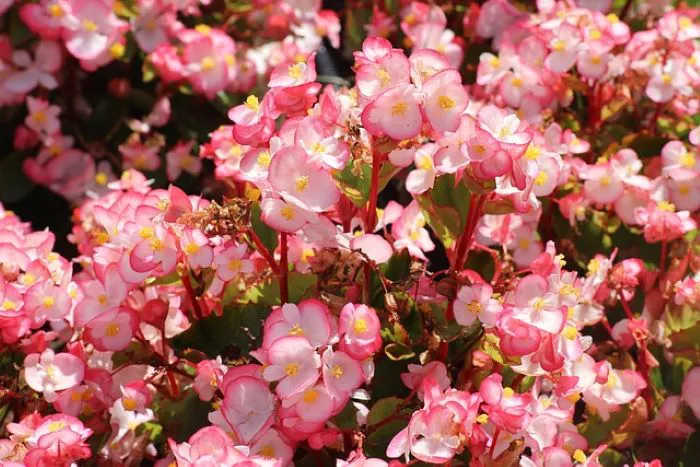Begonias are a popular group of flowering plants known for their striking beauty and versatility. They belong to the family Begoniaceae and are native to tropical and subtropical regions around the world. With over 1,800 species and numerous hybrids, begonias exhibit a wide range of shapes, colors, and sizes. This article provides a detailed look at the characteristics of begonias, focusing on their appearance, leaf structure, flower types, and growing conditions.
General Appearance of Begonias
Begonias are primarily known for their attractive foliage and vibrant flowers. The overall appearance of a begonia plant can vary significantly depending on the species and cultivar. Most begonias are herbaceous perennials, meaning they have soft stems that typically die back in winter but regrow in spring.
Begonias can range in size from small, compact plants to larger varieties that can grow several feet tall. The growth habit can be upright, trailing, or bushy, making them suitable for various gardening styles, including container gardening, hanging baskets, and garden beds.
Leaf Characteristics
One of the most striking features of begonias is their leaves. Begonia leaves are often asymmetrical, with a wide variety of shapes including oval, heart-shaped, and lobed. The leaves can be smooth or textured, and many species have unique patterns and colors.
The coloration of begonia leaves can be quite diverse. Some leaves are deep green, while others may have shades of red, purple, or even silver. The undersides of the leaves are often a contrasting color, adding to the plant’s visual appeal. For example, the popular Rex begonia has leaves that are richly patterned with shades of green, silver, and burgundy.
Flower Structure and Colors
Begonia flowers are another highlight of the plant. They typically emerge in clusters, producing a profusion of blooms throughout the growing season. The flowers can be single or double, depending on the variety, and they come in a wide range of colors, including white, pink, red, and orange.
The flowers of begonias are usually asymmetrical, with four or five petals. The petals are often waxy or glossy, giving them a polished appearance. The flowering season varies by species, but many begonias bloom from late spring to early fall.
Some begonias, like the tuberous begonias, are particularly prized for their large, showy flowers. These flowers can reach several inches across and create a stunning display in gardens and containers.
Growing Conditions and Care
Begonias thrive in specific growing conditions that enhance their appearance. They prefer well-drained soil that retains some moisture but does not become waterlogged. A mix of potting soil and perlite or vermiculite is often ideal for container-grown begonias.
Light requirements for begonias can vary. Most prefer bright, indirect light, while some varieties can tolerate low light conditions. However, direct sunlight can scorch the leaves, so it is essential to provide the right balance of light.
Watering is also crucial for begonia health. The soil should be kept consistently moist but not soggy. Overwatering can lead to root rot, while underwatering can cause the leaves to droop and become crispy.
Fertilization is recommended during the growing season to promote healthy growth and abundant flowering. A balanced, water-soluble fertilizer applied every few weeks can support the plant’s nutritional needs.
Popular Varieties of Begonias
Several begonia varieties are especially popular among gardeners due to their unique characteristics.
Rex Begonia: Known for its stunning foliage, Rex begonias have large, colorful leaves with intricate patterns. They are often used as houseplants and in shaded garden areas.
Tuberous Begonia: These begonias are famous for their large, showy flowers. They are often grown in containers and are ideal for adding color to patios and gardens.
Wax Begonia: Wax begonias are hardy and easy to grow, making them a favorite for bedding plants. They have glossy leaves and produce small, colorful flowers.
Angel Wing Begonia: This type features elongated, angel-wing-shaped leaves with distinctive markings. They are often grown for their ornamental foliage and can produce clusters of small flowers.
Conclusion
Begonias are a diverse and visually appealing group of plants that offer both beautiful foliage and vibrant flowers. Their unique leaf shapes, colors, and flower structures make them a favorite among gardeners and plant enthusiasts. Understanding the characteristics of begonias can help gardeners select the right varieties for their spaces and provide the necessary care to ensure healthy growth. Whether used in containers, hanging baskets, or garden beds, begonias are sure to add beauty and interest to any landscape.


